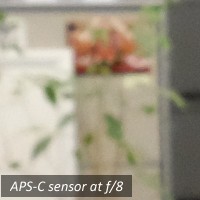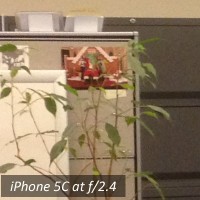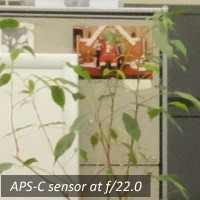Why does shooting a point-and-shoot camera at f/1.8 look like shooting a large sensor camera at f/5.6? Why doesn’t your point-and-shoot have that special, magical out of focus (bokeh) quality? It has to do with aperture AND sensor size, and the camera manufacturers don’t want you to understand this.
Camera manufacturers want you to be confused and to buy (many) cameras. Why on earth would they call the sensors something unrelatable to each other like “APS-C,” “1,” “Micro Four Thirds,” etc? Do you think that they want you to know that the best that Micro Four Thirds f/1.4 lens can do is f/2.8 on a full frame camera???
Why haven’t you heard about this???
Typically, sensor size is explained with technical terms like “crop factor” or with a diagram like this:
Looks pretty, but doesn’t tell you what is going on nearly as well as this (click to enlarge):
What this reveals is that
- APS-C sensors in less expensive cameras are about 1/2 the area of Full Frame sensors,
- Micro Four Thirds sensors are about 1/2 the area of APS-C,
- 1″ is half the area of Micro Four Thirds, etc.
Although hardware is adjusted so that exposure settings (shutter, f-stop, ISO) are about the same on each type of sensor, each time you cut the area in half causes the aperture to act 1 stop smaller.
Here is a handy-dandy translation table to visualize this.
So that “huge” f/1.8 advertised on a typical point and shoot actually looks like f/8 on an APS-C (4 stops) or f/11 on a full frame camera (5 stops) (see red numbers below). Let that sink in a moment.
Try it. Here is an example that I quickly shot (pardon my messy workspace. It is half garage/old equipment graveyard).
(Above) Left is f/1.8 on a 2/3 sensor. Right is f/5.6 on an APS-C sensor.
Here are some closeups:
The out-of-focus quality (bokeh) is between f/5.6 and f/8 on APS-C (so worse than 3 stops).
So, my iPhone 5C has a fixed 2.4 aperture which means it performs like f/22 on a full frame camera. Doh!
I don’t have a full frame camera, but an APS-C camera at f/16 is equivalent to f/22 on a full frame camera.
You may have noticed that the f/22 photo on the APS-C sensor is starting to diffract badly. For those new to diffraction, as you go smaller in aperture, your depth of field increases, but your image also diffuses or becomes fuzzier. This Youtube video has an excellent short explanation.











